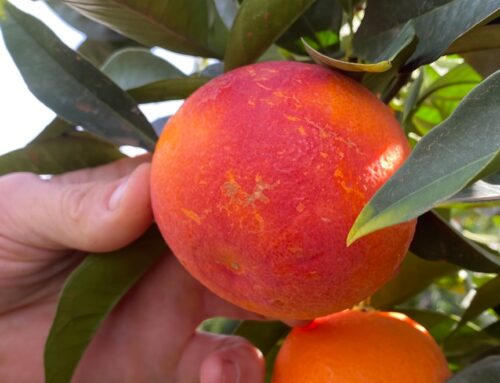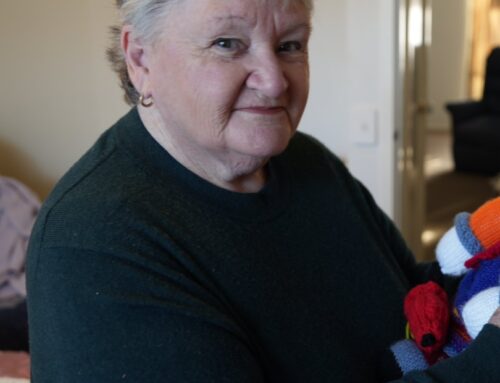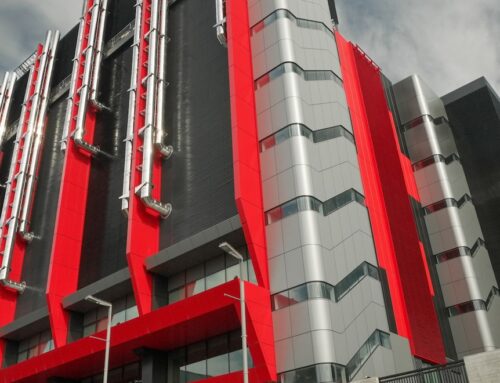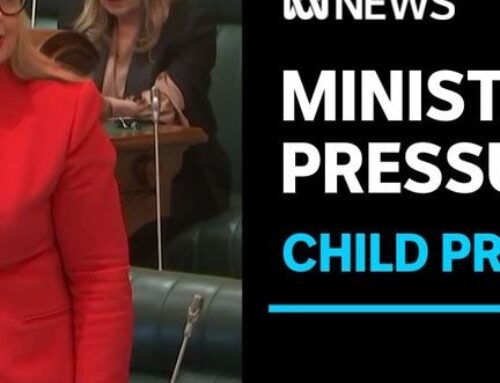South Australia’s Premier Peter Malinauskas and Treasurer Stephen Mullighan have handed down the latest state budget.
Look back on our blog for how the day unfolded.
Key events
That’s a wrap from us
Thanks for joining us for the ins and outs of this year’s SA budget.
Further fallout and analysis will no doubt continue in the coming days, but here’s a look at the key ingredients so far:
- Cost-of-living spending of $266 million is the biggest of the budget measures that weren’t leaked in the lead-up to today’s lock-up
- Some of that money will go towards a $243 one-off cost-of-living concession payment to more than 210,000 households
- But the budget’s also continuing on a trajectory of record debt, which is tipped to hit $44.2 billion in the next few years
If you want to find out more about this year’s budget, and how it will impact you, you can check out this breakdown of spending by ABC reporter Sara Garcia.
What about ambos?
What’s in the budget papers for the SA Ambulance Service?
There’s $10.7 million over four years to fund additional staff for the SA Ambulance Service’s clinical phone assessment service.
Leah Watkins from the Ambulance Employees Association says the service is currently available for 12 hours a day, but the extra funding will allow it to operate 24/7.
She says the new positions created will help mental health patients explore alternative care options.
The budget also includes $24 million over three years for new ambulance stations at Whyalla, Marion and Two Wells.
And there’s $23.5 million over two years for an SA Ambulance Service electronic patient care record system.
“Currently ambos have to write with pen and paper, there’s carbon copies of every page … it’s incredibly inefficient and there’s so much room for error when you’re using paper based timesheets and handwritten notes,” Ms Watkins says.
“Our members really look forward to being brought into the 21st century in that regard.”
There’s much more on health in the budget. You can read more about that here:
School and transport concessions
Among the cost-of-living measures contained in the budget is one for parents and caregivers of children attending public schools.
They will save $200 in fees next school year thanks to a reduction in the materials and services charge in 2025.
The Treasurer says the measure will benefit “up to 120,000 public school students”.
Some public transport users will also be granted cheaper travel.
An additional 15,000 Health Care Card holders will get access to public transport concessions.
“The government … is extending public transport concessions to all Health Care Card holders at a cost of $10.6 million over four years,” Stephen Mullighan says.
Key Event
What’s in the budget for domestic violence prevention?
The budget includes $1.5 million over two years to support the previously announced Royal Commission into Domestic, Family and Sexual Violence, which will begin in July.
The budget also includes $3.3 million to continue pilot programs, including wellbeing and recovery services for survivors and preventative education and behaviour programs for perpetrators.
Mary Leaker from Embolden, the peak body for domestic family and sexual violence services, welcomed that funding.
But she says she’s disappointed in a lack of funding targeted at crisis services.
“We urgently have a need for additional funding for these services to meet increased demand, and that demand will only grow through the Royal Commission and also the introduction of coercive control legislation later this year,” she says.
Thumbs up for concessions, but down for housing: SACOSS
The South Australian Council of Social Service has given a mixed assessment of the budget’s contribution to social welfare.
It’s welcoming the one-off concession payments, but says investment in housing “pales” in comparison to what’s needed.
“We’re very pleased to see those initiatives that have been taken in this budget that will ensure that some of our low-income households get the support they need through the cost-of-living crisis,” CEO Ross Womersley says.
“But … in order to address the housing shortage in South Australia we need them to build more than 1,000 properties a year.
“In this budget we’re seeing a very small number of properties being built … and it pales in contrast to the number that we think is required to really address the situation.”
That view is shared by Public Service Association general secretary Natasha Brown, who says “little funding has been earmarked for public housing stock”.
“More market housing does not help the growing number of South Australians who will probably never be in a position to buy their own home and are struggling to pay market rent.”
Not enough for mental health, advocacy group says
Paul Creedon from the Mental Health Coalition South Australia says he was “hoping for more” from the budget.
“Whilst we’ve seen a great deal of money put towards beds etcetera in hospitals, we haven’t seen the same sort of input into keeping people out of beds, and getting to them before they actually need that critical mental health support,” he says.
The budget includes $5 million for youth mental health services over four years.
Mr Creedon says there are 19,000 people in South Australia who have “a critical mental health need who are not getting that need met”.
“That’s two-thirds of the population,” he says.
Many ‘left out in the cold’, Opposition says
PlanSA recently estimated South Australia’s population at 1.86 million.
If the $44.2 billion debt forecast in four years’ time were divided equally between all 1.86 million, that would equate to about $23,700 per person.
Shadow treasurer Matt Cowdrey says it is a “debt bomb that is going to be passed onto future generations”.
“We see debt blowing out beyond $44 billion over forward estimates,” he said.
“That is the equivalent of $5.5 million a day that is going to be passed onto South Australians to repay into the future just to service that debt.”
Opposition finance spokesperson Heidi Girolamo says the fact that the $243 concession payments will not go to all South Australians means many will “be left out in the cold”.
“Many of these concessions are going to concession holders – not to everyday South Australians who have a mortgage … [and] are really struggling to make ends meet,” she said.
‘No nasty surprises’, according to Master Builders SA
Will Frogley from Master Builders SA says it’s a “solid budget with no nasty surprises”.
“Abolishing stamp duty really helps keep the dream of home ownership alive but there’s a lot of different factors that is putting pressures on housing affordability,” he says.
“Significant investment is needed in water and other sewerage infrastructure for these greenfields developments. That needs to happen as soon as possible so it’s really important that we have some clarity. “
He says he expects that clarity to be provided when the government shares its housing road map on June 25.
He also says the budget’s $2.3 billion investment in skills must be maximised.
“Another big question obviously is who is going to build all these homes?”
“A lot of money is being spent to attract more people into apprenticeships, but the completion rates are really poor.”
Regional spend includes steelworks sustainability
Among budget spending in regional SA is a $43 million commitment to undertake significant emergency fruit fly response activities following outbreaks across Adelaide and in the Riverland.
Regional employment will be boosted by a $9 million investment to connect learners, employers and trainers, and support skills programs.
Also in the budget is a $1.7 million investment involving the Whyalla steelworks.
The plant has been making headlines lately because its all-important blast furnace was damaged during repair efforts, fuelling concerns among some of the city’s residents about the site’s long-term viability.
The government says money will be spent over two years to support the sustainability of the plant.
Nurses’ union responds to budget
We’re hearing some reactions to the budget now.
Australian Nursing and Midwifery Federation SA’s Elizabeth Dabars says she welcomes the additional health funding in the budget, particularly the investment in more hospital beds.
But she says investment in increasing the number of nurses and midwives to “safely staff those beds” is missing.
“It’s all well and good to have a hospital bed, but if you press the call bell and no one comes it’s not much good,” she says.
Do you have a budget question?
If you have a question about the budget, or how it may affect you, drop us a comment using the blue button above. We’ll do our best to bring you the answers from our team of expert reporters!
Key Event
How will debt impact credit?
In 2012, in the wake of the global financial crisis, South Australia’s credit rating was downgraded by ratings agency Standard and Poor’s (S&P) from triple-A.
It was big news at the time, because the elite rating was cherished by Labor under former premier Mike Rann and treasurer Kevin Foley.
A dozen years on, with debt now tipped to hit $44 billion, what impact will that growing sum have on SA’s global economic standing?
According to S&P Global Ratings, while SA’s “overall cash deficits may widen slightly, contrary to our previous expectations”, there is no need to alter the current rating.
“South Australia’s credit metrics can withstand another rise in infrastructure spending, thanks to a likely increase in tax revenue,” analyst Martin Foo says.
“A strong property sector and a historically tight labor market should drive the revenue increase and ensure sufficient headroom at the ‘AA+’ level to accommodate the higher spending.
“The general strength and wealth of South Australia’s local economy, comprehensive liquidity coverage, and Australia’s excellent institutional settings support our ratings on the state (AA+/Stable/A-1+).”
More from reporter Rory McClaren
A cost-of-living package was saved from pre-budget day announcements to act as a centrepiece for Stephen Mullighan today.
Here’s more analysis from state political reporter Rory McClaren:
The $266 million spend is not as big as last year but there’s a reason for that, with the announcement calibrated around the Federal Budget in May, which included tax cuts and energy bill relief.
Tweaks to the operations of concessions are likely to please the state’s social services sector too, and families are set to benefit through the expanded sports voucher program and material and service charge relief.
Then there’s an additional $610 million for skills as the state begins the long ramp up towards a future which is expected to see nuclear-powered submarines built at the Osborne shipyard.
Premier Peter Malinauskas was keen to point out, when his cabinet has been making “big decisions” they’re trying to think about the 2030s.
But some of those decision will contribute to a significant jump in state debt, driven by major infrastructure projects coming further into the budget years.
Net debt is expected to grow by more than $12.5 billion over just the next four years to $44.2 billion. And economic conditions are cooling.
Stephen Mullighan says the government is comfortable the level of debt is appropriate.
But there will come a time when it will have to be paid down.
Budget analysis by Rory McClaren
State Political Reporter Rory McClaren has also emerged from the lock-up. Here’s what he has to say about the budget:
This is clearly a Labor budget, with significant continued spending — and focus — on education, skills, cost-of-living relief and health.
It’s been helped along thanks to increases in revenues, with a surplus in this financial year and forecast across the next four.
But the government is having to throw even more money at health to deal with the problems the system is facing.
The budget papers reveal more than $460 million in extra funding has been needed in the last six months alone to keep up.
For context, that’s nearly 80 per cent of the budget needed to build the state government’s hydrogen plant outside Whyalla.
Key Event
Opposition criticises ‘debt bomb’
The South Australian opposition says the cost-of-living relief provided in the state budget was only a “drop in the ocean” of what was really needed to help families.
The opposition’s Matt Cowdrey described the $44 billion debt projected by 2027-2028 as a “debt bomb that will be passed on to future South Australians”.
He also expressed disappointment there was no energy bill relief for households.
“We have a cost-of-living crisis, we have a housing crisis, we have people struggling to pay electricity, we have people struggling to put a deposit on a home … this budget has done very little to ease those burdens,” he said.
Key Event
More detail on $243 payments
The treasurer is selling the budget very much on cost-of-living.
Stephen Mullighan says more than 200,000 households will be eligible for the $243 one-off concession payment, and that he is “very confident” the money will support South Australians at a time of economic hardship.
“The budget … deploys a further quarter of a billion dollars in targeted cost-of-living relief to those South Australians who need it the most,” Mr Mullighan said during his budget speech.
“There are more than 210,000 households, or one-in-four households in South Australia, that receive the cost-of-living concession.
“As we put together our cost-of-living package, we were doing so to be delivered shortly after the Commonwealth budget had deployed its really significant and broad-based cost-of-living support to working Australians.”
Who are the winners and losers?
Reporter Sara Garcia has been breaking down the winners and losers of this year’s state budget.
Find out more here:
Budget’s in black
The ABC’s Leah MacLennan has been reading through the budget papers. Here’s what she says:
The state government says it’s keeping the budget in black, with surpluses predicted across the forward estimates.
This year it’s predicting a $306 million surplus, up from $154 million estimated in the mid-year budget review.
But it’s also continuing on a trajectory of record debt.
In this budget it’ll reach more than $31 billion, and by 2027/28 it’s predicted to hit more than $44 billion.
That’s mainly to pay for big infrastructure projects like the tunnels for the North-South Corridor project.
The government’s expenses have gone up, but its revenue has gone up too.
It’s getting $2.2 billion more than previously predicted over four years through GST, payroll tax, stamp duty and other state-based taxes, as the cost of goods, services and housing goes up.
But there’s $2.5 billion more being spent on health alone over five years, largely because it’s getting increasingly expensive to run the system.
The government wants a big focus of this budget to be on what it’s doing to address the increasing cost of living.
There’s $266.6 million in additional measures from expansion of things like energy concession payments and school sports voucher programs.
Key Event
What about housing?
There are several measures the government hopes will make housing more accessible to South Australians.
- Stamp duty is scrapped for new builds for first-home buyers, and there’s now no cap on the first-home buyers grant — combined measures which will cost the government around $30 million
- $425.3 million has been earmarked for a major housing development at Seaton, with another $150.2 million for Noarlunga
Key Event
How much is in the budget for health?
Health, cost of living and housing are three big-ticket items in this year’s budget.
There’s $2.5 billion in additional funding for health over five years.
- $1.6 billion of that is effectively a cost blow-out – it’s going to cost that much more to keep operating the system
- There’s also $742.3 million more in the budget to cover the predicted increased demand in public health
- But there’s also money for new beds and projects, including $30.2 million for 56 new beds across the Queen Elizabeth and Lyell McEwin Hospitals




